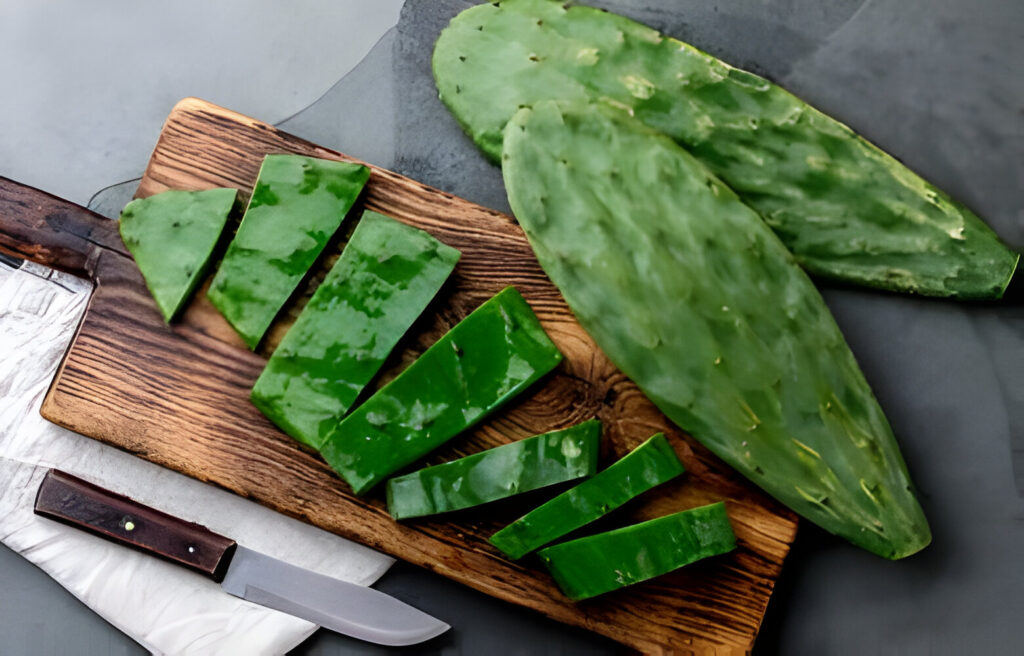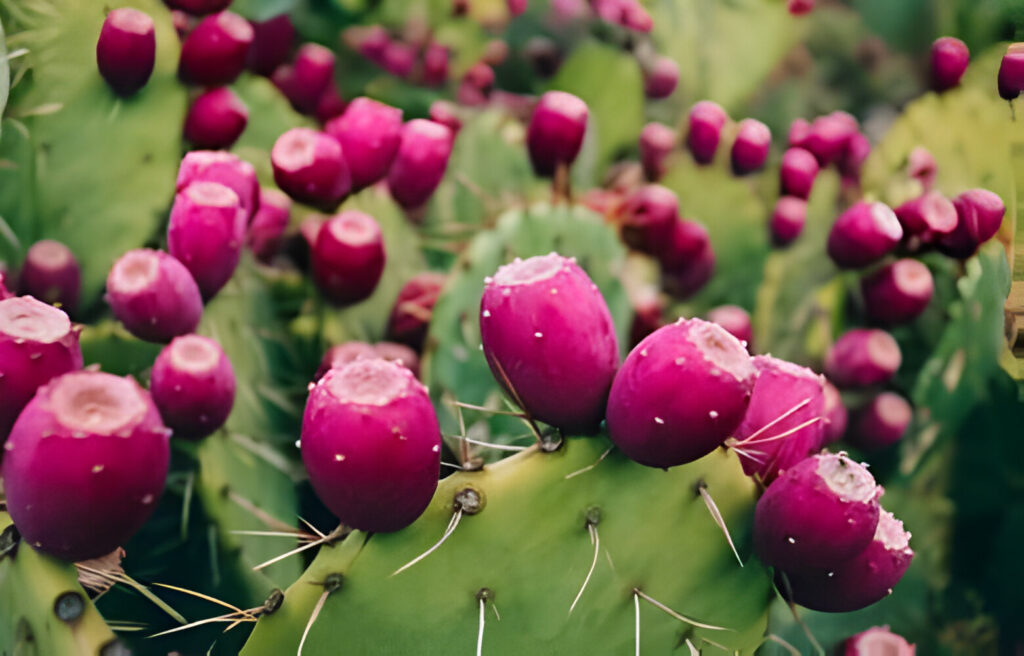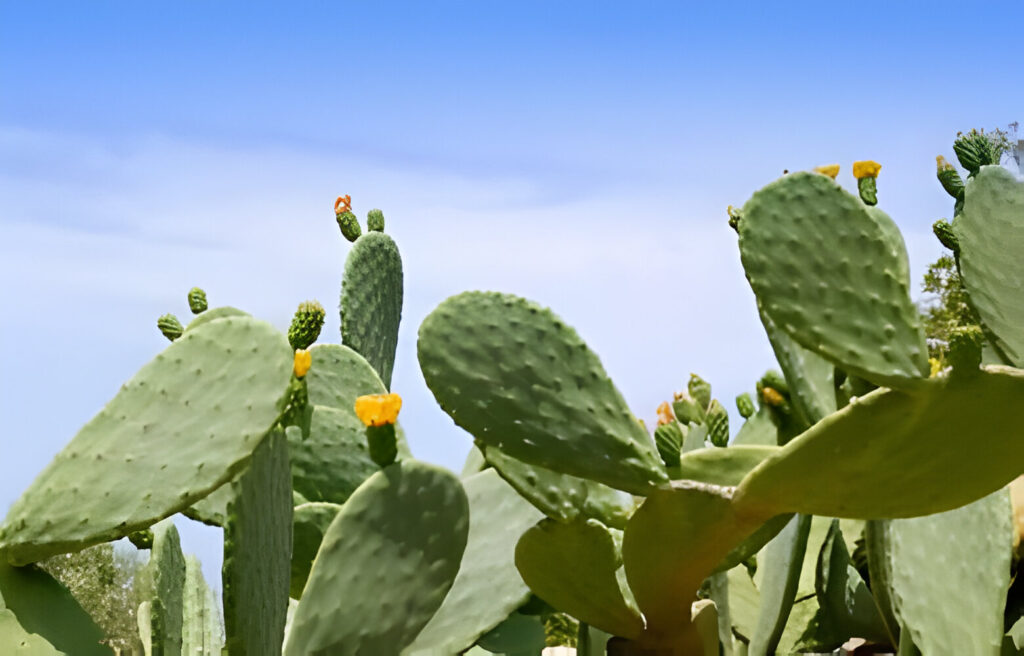
Introduction to Nopales
Nopales, often celebrated as a culinary treasure, stand out in the vast world of edible plants. These cactus pads, known for their distinctive taste and texture, form an integral part of Mexican cuisine. Rich in nutrients and versatility, nopales invite curiosity and appreciation from food lovers and health enthusiasts alike.
What Are Nopales?
Nopales come from the Nopal cactus, also known as Opuntia. They are green, fleshy pads that resemble large paddles. Before cooking or consumption, one must remove the spines. Their flavor is slightly tart, comparable to a cross between green beans and okra. Nopales serve as a staple in many Mexican dishes, ranging from salads to main courses.
Cultural Significance
In Mexico, nopales go beyond just being a food item. They symbolize a rich cultural heritage, reflecting centuries of tradition and culinary innovation. Markets across Mexico display these cactus pads, showcasing their importance in daily life and cuisine. Moreover, nopales feature in various festivals and holidays, underlining their role in cultural identity and community gatherings.
Nutritional Benefits
Nopales offer more than just unique flavors. They are a powerhouse of nutrition. High in fiber, antioxidants, and essential vitamins (like Vitamin C and Vitamin K), nopales contribute significantly to a balanced diet. Furthermore, they are low in calories, making them a favorable option for weight management. The presence of essential minerals, such as calcium and magnesium, enhances their value as a health-boosting ingredient.
Transitioning from their historical roots to modern plates, nopales embody a fusion of tradition and nutritional science. This cactus plant, deeply embedded in Mexican culture, continues to gain recognition worldwide for its culinary versatility and health benefits. As we delve deeper into the world of nopales, we uncover a story of cultural pride, nutritional wealth, and sustainable living.
Historical and Cultural Background of Nopales
Nopales, the succulent pads of the Opuntia cactus, boast a rich history that intertwines with the cultural fabric of Mexico and beyond. This section delves into their origins, cultural importance, and global spread, providing insights into the enduring legacy of nopales.
Origins in Mesoamerica
Nopales have thrived in the arid landscapes of Mesoamerica for thousands of years. Indigenous peoples first discovered the nutritional and medicinal value of these cacti. They skillfully integrated nopales into their diet and medicinal practices, recognizing their benefits long before scientific validation. Such early use highlights the ingenuity of these cultures in harnessing the natural resources around them.
Cultural Importance in Mexico
In Mexico, nopales transcend mere food. They symbolize resilience and adaptability, mirroring the nation’s spirit. Nopales feature prominently in Mexican cuisine, from the traditional Nopal salad to being a staple in tacos and stews. Moreover, they are a symbol of Mexican heritage, celebrated in art, folklore, and national identity. This cultural emblem fosters a sense of pride and continuity among Mexicans, bridging past and present.
Global Spread and Recognition
The versatility and health benefits of Opuntia cacti have propelled them onto the global stage. Today, they are not just a staple in Mexican and Southwestern American diets but also a superfood recognized worldwide. Chefs and food enthusiasts across the globe experiment with Opuntia cacti, incorporating them into a wide array of culinary creations. This global fascination underscores the universal appeal of nopales, transcending cultural and geographical boundaries.
Transitioning from a regional specialty to a globally appreciated ingredient, nopales have demonstrated remarkable versatility and resilience. Their journey from the arid regions of Mesoamerica to global recognition mirrors the human ability to find, adapt, and celebrate nature’s gifts. As nopales continue to spread across the world, they carry with them centuries of history and cultural significance, enriching global cuisine and fostering a deeper appreciation for the natural world.

Nutritional Value and Health Benefits of Nopales
Opuntia cacti, the edible pads of the prickly pear cactus, have gained popularity as a superfood. Rich in nutrients and boasting numerous health benefits, they offer a versatile addition to any diet. In this section, we delve into the nutritional makeup and the impressive health advantages of incorporating Opuntia cacti into your meals.
Nutritional Content
Nopales are a nutritional powerhouse. Firstly, they are low in calories but high in fiber, making them an excellent choice for weight management. Additionally, they contain vitamins C, E, and A, alongside minerals such as calcium, magnesium, and potassium. Notably, nopales provide a significant amount of antioxidants, which play a crucial role in preventing oxidative stress and inflammation.
For those monitoring their dietary intake, nopales offer a nutrient-dense option. They contribute essential nutrients while maintaining a low calorie count, supporting overall health without compromising dietary goals.
Health Benefits
Blood Sugar Control
Opuntia cacti stand out for their ability to regulate blood sugar levels. The high fiber content slows down the absorption of sugar in the bloodstream, offering a natural method to manage diabetes. Several studies suggest that including Opuntia cacti in meals can significantly reduce glucose spikes after eating, benefitting individuals with type 2 diabetes.
Cholesterol Reduction
Another remarkable benefit of Opuntia cacti is their role in reducing cholesterol levels. The fiber in nopales helps lower LDL (bad) cholesterol while maintaining HDL (good) cholesterol. This balance is crucial for heart health, reducing the risk of heart disease.
Weight Loss and Digestion
The rich fiber content in Opuntia cacti also aids in weight loss and improves digestive health. Fiber increases satiety, leading to reduced calorie intake. Furthermore, it supports a healthy digestive system, preventing constipation and promoting regular bowel movements.
Antioxidant Properties
Opuntia cactiare rich in antioxidants, which protect the body from free radicals. These antioxidants, such as vitamin C and flavonoids, contribute to reducing inflammation and preventing chronic diseases. Their anti-inflammatory properties are particularly beneficial for conditions such as arthritis and heart disease.
Research and Studies
Recent research underscores the benefits of Opuntia cactifor health. Studies have shown that nopales can indeed lower blood sugar and cholesterol levels, among other advantages. While more research is needed to fully understand all the potential health benefits, current findings are promising.
Incorporating Opuntia cactiinto your diet can significantly contribute to your overall health. Their nutritional content and health benefits make them an excellent addition to a balanced diet. Moreover, their versatility in recipes ensures that enriching your meals with Opuntia cactiis both easy and delicious.
Culinary Uses
Nopales, with their unique flavor and texture, have long been a staple in Mexican cuisine. Recently, they’ve caught the attention of chefs and home cooks worldwide, eager to explore their versatility in various dishes. This section will guide you through the preparation, traditional recipes, and modern culinary trends associated with Opuntia cacti, enriching your kitchen repertoire.
Preparation Methods
Before diving into the culinary world of Opuntia cacti, it’s crucial to understand how to prepare them. Begin by washing the pads to remove any dirt. Then, carefully remove the spines and edges using a vegetable peeler or knife. Once cleaned, cut the Opuntia cactiinto strips or dice them, depending on your recipe. Boil or grill them until tender, which usually takes about 10 to 15 minutes. This process not only makes them safe to eat but also reduces their natural sliminess, enhancing their texture and flavor.
Traditional Recipes
Nopales have graced many traditional Mexican dishes with their presence. A classic example is “Nopales con Huevos,” a hearty breakfast where scrambled eggs meet the tender cactus. Another beloved dish is “Ensalada de Nopales,” a refreshing salad featuring nopales, tomatoes, onions, and cilantro, dressed with lime juice and olive oil. For a comforting meal, “Carne con Nopales,” a stew combining nopales with beef and chili peppers, showcases the ingredient’s ability to complement and absorb flavors.
Modern Culinary Trends
The global culinary scene has embraced nopales, experimenting with them in innovative ways. Health-conscious cooks appreciate nopales for their nutritional value, incorporating them into smoothies and vegan dishes for an extra fiber boost. Gourmet chefs feature nopales in avant-garde creations, such as nopales sushi rolls or nopales-infused cocktails, showcasing their versatility beyond traditional uses.
The adaptability of nopales means they can enhance a wide range of dishes, from simple salads to complex main courses. As more people seek out plant-based and healthful ingredients, nopales stand out as a sustainable and nutritious choice, fitting perfectly into modern culinary trends.
Incorporating nopales into your cooking not only adds a nutritional punch but also introduces an exciting new texture and flavor profile to your dishes. Whether you’re adhering to traditional recipes or exploring contemporary culinary creations, nopales offer a world of possibilities for enhancing your meals.
Growing and Caring for Nopales
Nopales, or prickly pear cacti, are not only valued for their culinary uses but also for their ease of cultivation. Thriving in a variety of conditions, they are an excellent choice for gardeners looking to add a sustainable and low-maintenance plant to their collection. This section outlines the essential care tips and growing conditions for nopales, ensuring a thriving cactus garden.
Growing Conditions
Nopales prefer sunny locations with well-draining soil. They are drought-tolerant plants, making them ideal for arid and semi-arid climates. However, with proper care, they can adapt to other environments as well. When planting nopales, choose a spot that receives at least six hours of direct sunlight daily. If you’re growing them in a cooler climate, consider using pots that can be moved indoors during frosty months.
For soil, a mix of sand, perlite, and compost works best, providing the drainage nopales require. They can thrive in soil pH ranges from slightly acidic to slightly alkaline. Ensuring the correct soil composition and pH can prevent root rot and other moisture-related issues.
Care Tips
Watering is crucial for nopales, but it’s essential to avoid overwatering. Allow the soil to dry completely between waterings. During the summer, watering once a week is sufficient, while in cooler months, reducing the frequency helps prevent root rot.
Pruning nopales helps maintain their shape and size. Use gloves and tongs to handle the pads and remove any dead or damaged parts. Pruning also encourages the plant to produce more pads.
Fertilizing with a cactus-specific fertilizer in spring and summer supports healthy growth. Apply the fertilizer sparingly, following the instructions on the product label.
Pest Management
While nopales are resilient, they can encounter pests such as scale insects and cactus beetles. Inspect your plants regularly for signs of pests. If you spot any, remove them manually or treat the plant with an appropriate insecticide. Always choose the least toxic option to protect the plant and the environment.
By providing the right conditions and care, growing nopales can be a rewarding experience. Not only do they add a unique aesthetic to your garden, but they also offer the added benefit of producing edible pads. Whether you’re an experienced gardener or a beginner, nopales are a fantastic addition to your gardening ventures, offering beauty, sustenance, and sustainability.

Conclusion
Nopales, the resilient and versatile pads of the prickly pear cactus, embody a unique blend of cultural heritage, nutritional benefits, culinary diversity, and environmental sustainability. Throughout this article, we’ve explored the rich history and cultural significance of nopales, their impressive array of health benefits, their myriad uses in the kitchen, and practical tips for growing and caring for these remarkable plants.
Embracing Tradition and Innovation
Nopales offer more than just a taste of Mexican tradition; they provide a bridge to understanding the deep-rooted connections between culture, food, and the environment. By incorporating nopales into our diets, we not only embrace a tradition that dates back centuries but also contribute to a sustainable future.
A Pillar of Health
The nutritional profile of nopales is nothing short of remarkable. Packed with essential vitamins, minerals, and fiber, nopales are a powerful ally in the fight against chronic diseases, offering natural ways to manage blood sugar, cholesterol, and weight. For further reading on their health benefits, websites such as WebMD or Healthline often feature articles that delve into the science behind these claims.
Culinary Creativity Unleashed
The culinary versatility of nopales is a testament to their adaptability. From traditional Mexican dishes to modern culinary creations, nopales offer a unique flavor and texture that can enhance any meal. Food blogs and websites like Serious Eats provide a wealth of recipes and inspiration for those looking to experiment with nopales in the kitchen.
Grow Your Own
For gardening enthusiasts, nopales offer an easy-to-care-for option that adds beauty and utility to your garden. Gardening websites and forums such as Gardenista or The Spruce often share tips and tricks for growing nopales and other succulents, helping you to successfully cultivate these plants at home.
As we conclude this exploration of nopales, it’s clear that these humble cactus pads offer much more than meets the eye. Whether you’re drawn to their health benefits, culinary potential, or environmental impact, nopales are a worthy addition to any lifestyle. By embracing nopales, we take a step towards a healthier, more sustainable, and flavorful future.
FAQ
In this section, we address frequently asked questions about nopales, providing clear, concise, and informative answers. These FAQs are designed to enhance understanding and appreciation of nopales, covering their nutritional benefits, culinary uses, and gardening tips.
What Are Nopales?
Nopales are the edible pads of the prickly pear cactus, scientifically known as Opuntia. They are a staple in Mexican cuisine, celebrated for their unique taste and texture. Rich in fiber, vitamins, and minerals, nopales offer a range of health benefits, from blood sugar management to cholesterol reduction.
How Do You Prepare Nopales for Cooking?
To prepare nopales, first, rinse them under cold water. Then, use a knife or vegetable peeler to carefully remove the spines and trim the edges. Cut them into your desired shape and size. Boil, grill, or sauté until they’re tender, which usually takes about 10 to 15 minutes.
Can Nopales Help in Weight Loss?
Yes, nopales can aid in weight loss. Their high fiber content promotes a feeling of fullness, helping to reduce overall calorie intake. Additionally, their low-calorie profile makes them an ideal food for weight management plans.
Are Nopales Good for Diabetics?
Nopales are excellent for diabetics. They contain fibers that can slow down the absorption of sugar in the bloodstream, helping to regulate blood glucose levels. Incorporating nopales into meals can be a natural way to manage diabetes.
How Do You Grow Nopales?
Nopales thrive in sunny, well-drained locations. Plant them in soil mixed with sand and compost for optimal drainage. Water them sparingly, allowing the soil to dry completely between waterings. With minimal care, nopales can grow and even produce edible pads.
Can Nopales Be Eaten Raw?
Yes, nopales can be eaten raw. When diced, they add a crunchy texture and a fresh, slightly tangy flavor to salads and salsas. However, cooking them softens their texture and mellows their flavor, making them suitable for a wider range of dishes.
What Are Some Popular Dishes Made with Nopales?
Popular dishes include Nopales con Huevos (scrambled eggs with nopales), Ensalada de Nopales (nopales salad), and Carne con Nopales (meat stew with nopales). These dishes showcase nopales’ versatility in the kitchen, blending seamlessly with various ingredients.
By addressing these common inquiries, we aim to shed light on the nutritional, culinary, and gardening aspects of nopales. Whether you’re exploring new dietary options, seeking natural ways to manage health conditions, or simply looking to diversify your garden, nopales offer a sustainable and healthful choice.
More from recipesmaya.com :